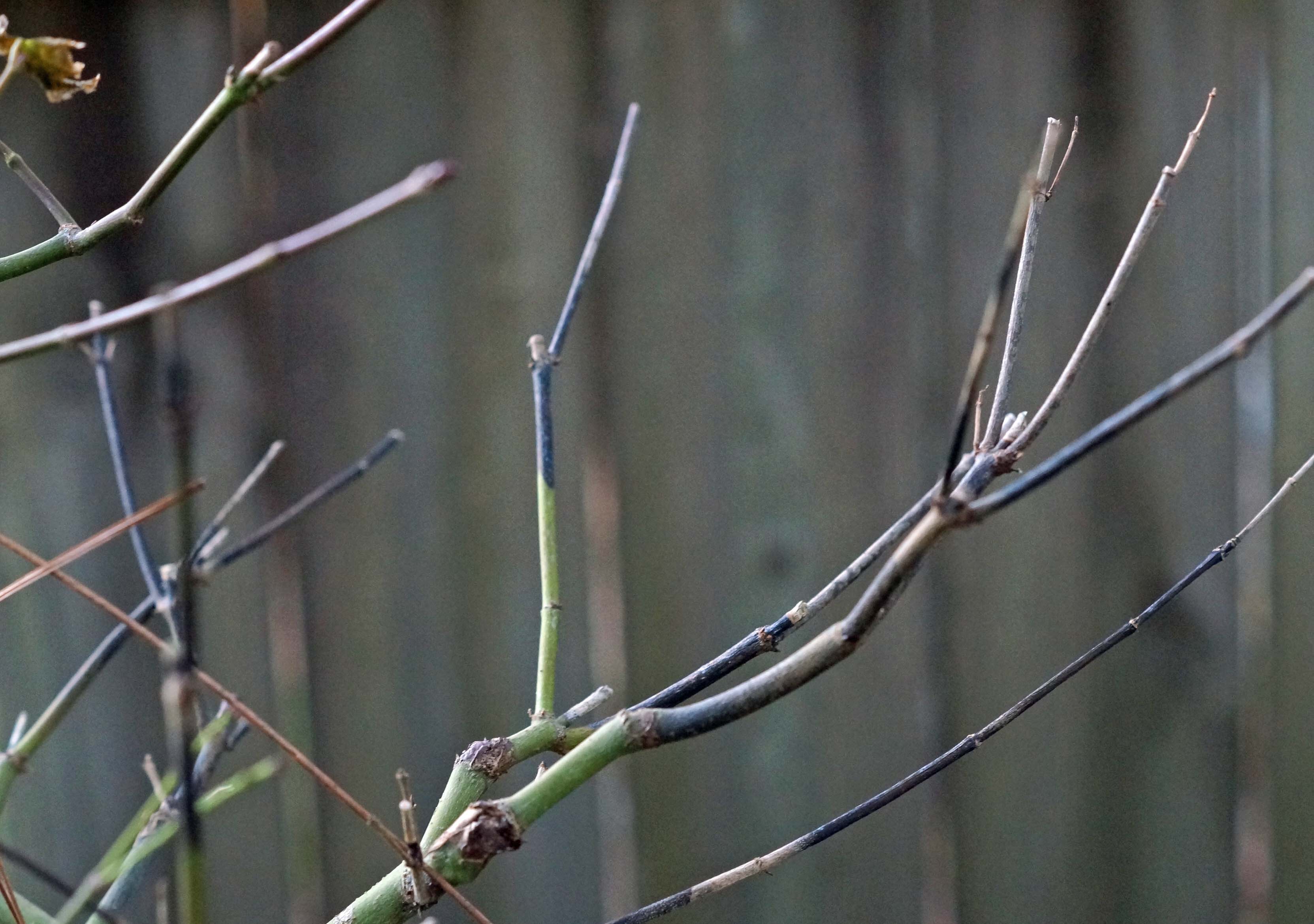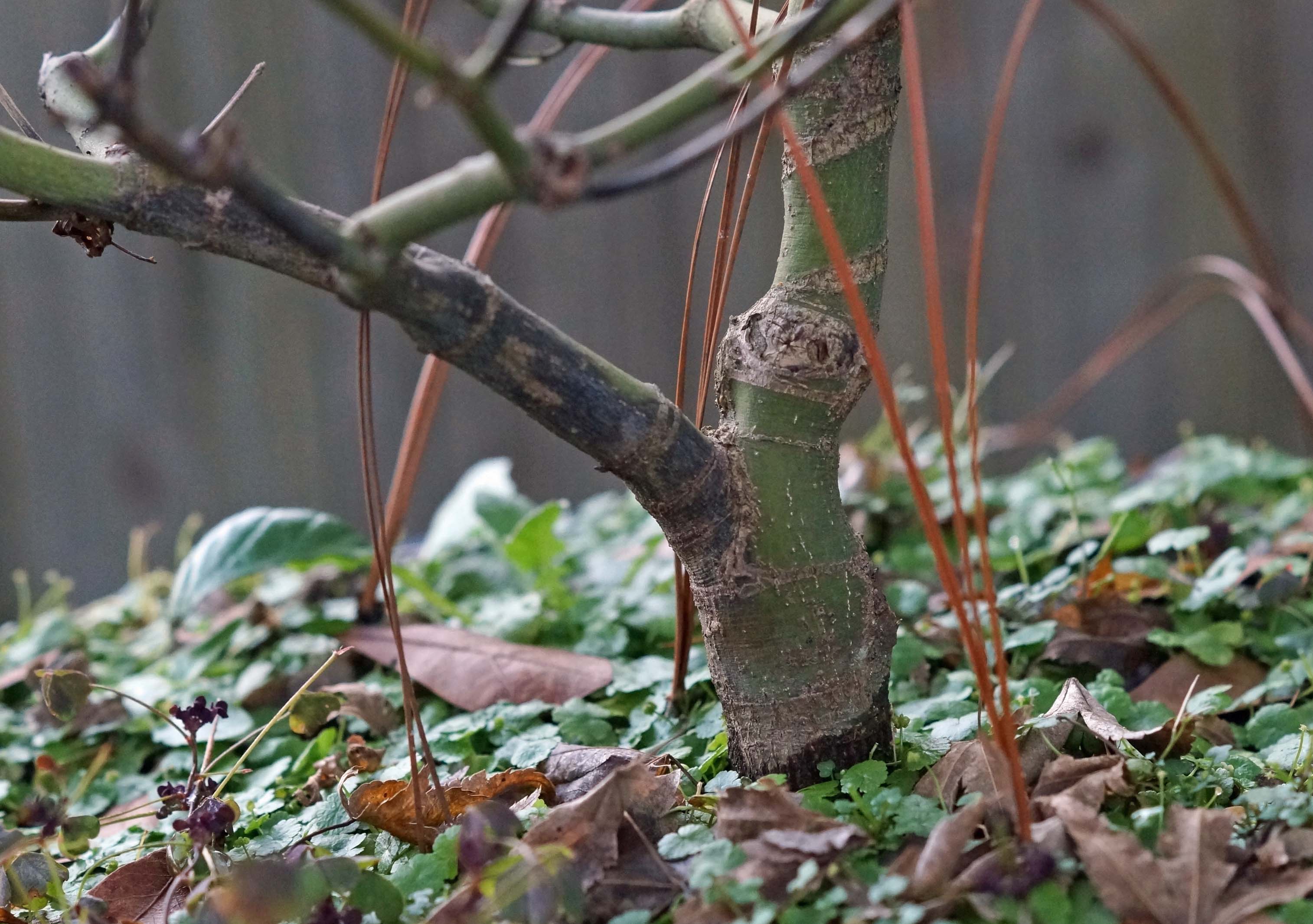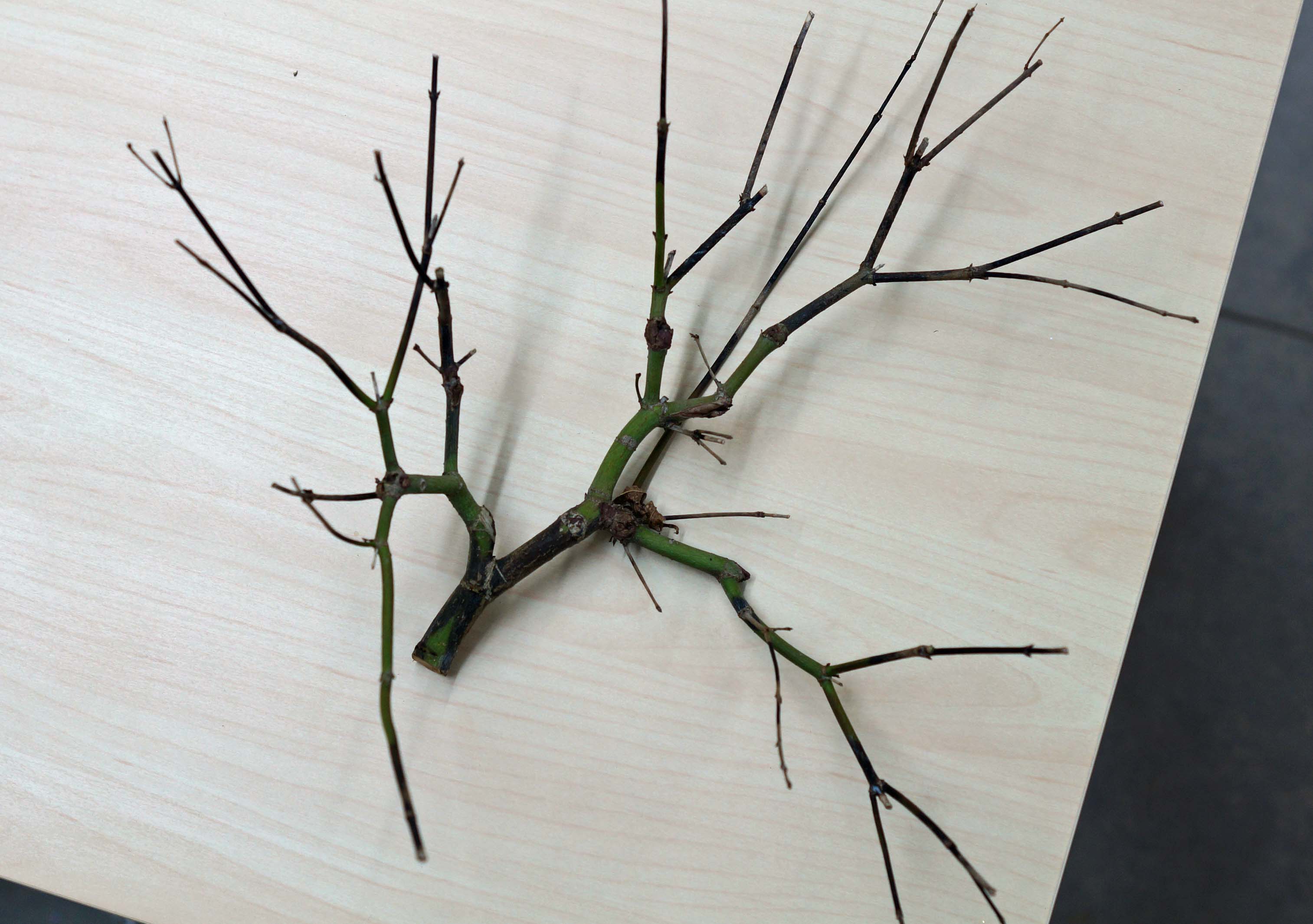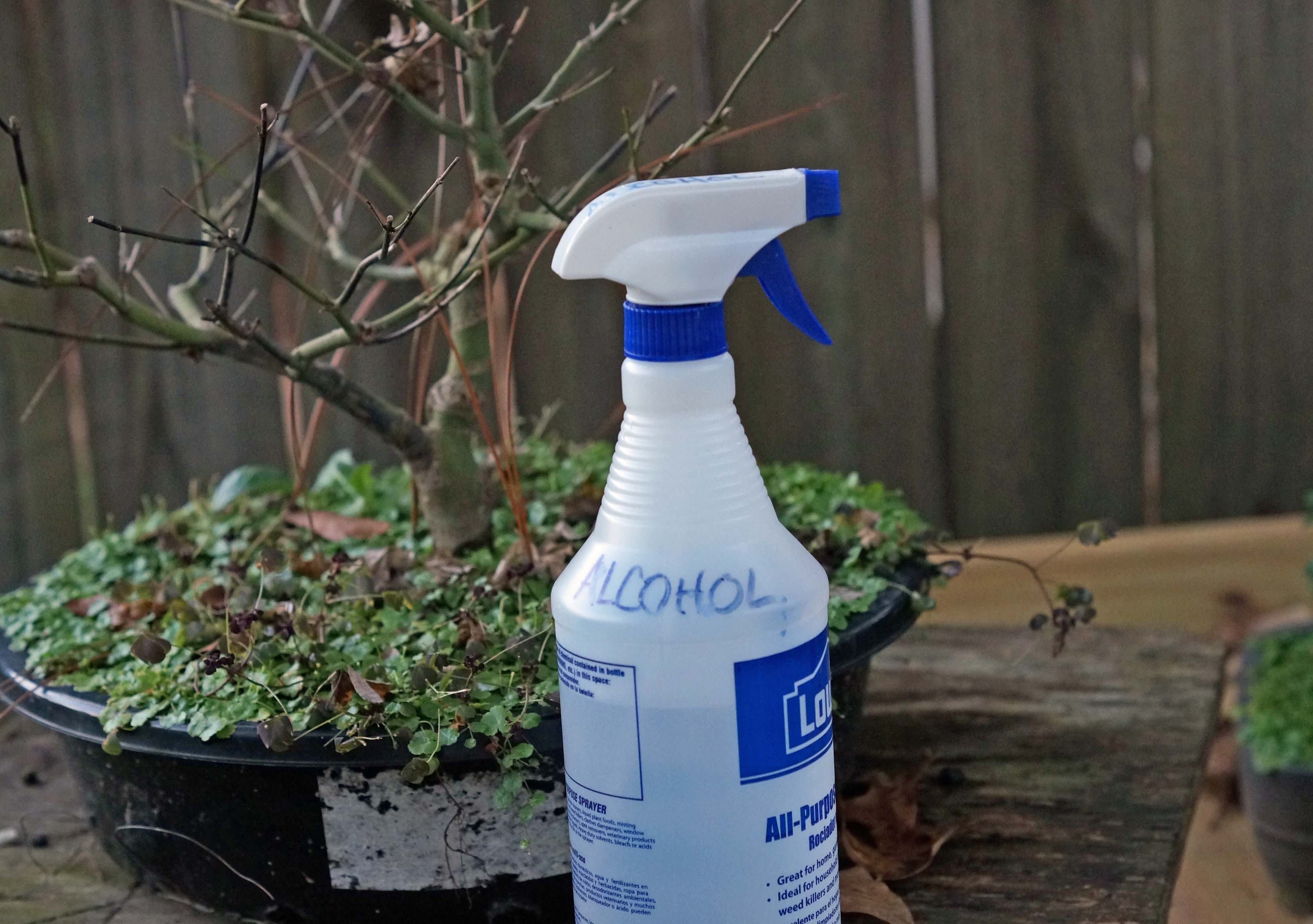Those who keep bonsai for any length of time usually have some sort of fungus or virus infect their trees. This year I have been battling two on my azaleas, ovulinia petal blight and rhizoctonia web blight, and another on my maples, anthracose. This article is about what I think is anthracose on a kyohime japanese maple. Unfortunately, it was very prolific this year due to the constant rain, high humidity, and hot weather.
This is what the almanac says about anthrocose:
"This fungal disease affects many plants, including vegetables, fruits, and trees. It causes dark, sunken lesions on leaves, stems, flowers, and fruits. It also attacks developing shoots and expanding leaves. It can spread very quickly during rainy seasons.
Anthracnose is a general term for a variety of diseases that affect plants in similar ways. Anthracnose is especially known for the damage that it can cause to trees. Anthracnose is caused by a fungus.
Anthracnose can survive on infected plant debris and is very easily spread. Like rust, it thrives under moist and warm conditions and is often spread by watering.
HOW TO IDENTIFY ANTHRACNOSE
On leaves, anthracnose generally appears first as small, irregular yellow or brown spots. These spots darken as they age and may also expand, covering the leaves.
On vegetables, it can affect any part of the plant.
On fruits, it produces small, dark, sunken spots, which may spread. In moist weather, pinkish spore masses form in the center of these spots. Eventually, the fruits will rot.
On trees, it can kill the tips of young twigs. It also attacks the young leaves, which develop brown spots and patches. It can also cause defoliation of the tree.
CONTROL AND PREVENTION - HOW TO CONTROL ANTHRACNOSE
· Remove and destroy any infected plants in your garden. For trees, prune out the dead wood and destroy the infected leaves.
· You can try spraying your plants with a copper-based fungicide, though be careful because copper can build up to toxic levels in the soil for earthworms and microbes. For trees, try a dormant spray of bordeaux mix. (lime sulpher)
PREVENT ANTHRACNOSE
· Plant resistant plants, or buy healthy transplants.
· Plant your plants in well-drained soil. You can also enrich the soil with compost in order to help plants resist diseases.
· Water your plants with a drip sprinkler, as opposed to an overhead sprinkler. Don’t touch the plants when they are wet.
Some common Maple Fungi;
Aureobasidium apocryptum, Discula campestris, Colletotrichum gloeosporioides, Discula umbrinella
Biology
Anthracnose fungi can over-winter in buds, twigs, fruit, fallen leaves or petioles depending on which hosts and pathogens are involved. The disease cycle begins in spring when spores are dispersed short distances by water or spread long distances by air to newly forming leaves. Spores are produced within new leaf infections several days to weeks after the initial infection and are further spread to new locations by splashing water.
The disease is most common in spring when new shoot and leaf growth are combined with temperatures ranging from 50-68°F and spring rain. Anthracnose can also reoccur in the summer when cool, wet weather is paired with succulent leaf growth. For ash, maple and oak trees, young leaves and shoots are highly susceptible to infection from the anthracnose fungi, but mature fully expanded leaves are largely resistant. Mature leaves of these trees only become infected through minor wounds like damage from insect pests. As a result, once the weather becomes dry and the leaves mature, disease growth will end, and the tree will replace lost leaves with a new flush of growth. In contrast, anthracnose can continue to progress through summer months on trees like hornbeam.
Leaf spotting and leaf distortion have very little affect on the health of the tree. However if a tree is severely defoliated multiple years in a row, this can weaken the tree. In such cases, opportunistic pests like boring insects or canker causing fungi can attack the tree resulting in more significant damage.
Fungicides
Fungicides are not necessary unless a tree has been completely defoliated several years in a row. Fungicides are protective and need to be applied before symptoms appear on the leaves. Proper timing of fungicide applications can vary widely from growing season to growing season and therefore can be difficult to predict. Chemical treatments include products with the following active ingredients.
- Propiconazole
- Thiophanate methyl
- Copper containing fungicides
- Mancozeb
- Chlorothalonil
*Always completely read and follow all instructions on the fungicide label."
This is what it did to one on my maples, the kyohime:
This is what the almanac says about anthrocose:
"This fungal disease affects many plants, including vegetables, fruits, and trees. It causes dark, sunken lesions on leaves, stems, flowers, and fruits. It also attacks developing shoots and expanding leaves. It can spread very quickly during rainy seasons.
Anthracnose is a general term for a variety of diseases that affect plants in similar ways. Anthracnose is especially known for the damage that it can cause to trees. Anthracnose is caused by a fungus.
Anthracnose can survive on infected plant debris and is very easily spread. Like rust, it thrives under moist and warm conditions and is often spread by watering.
HOW TO IDENTIFY ANTHRACNOSE
On leaves, anthracnose generally appears first as small, irregular yellow or brown spots. These spots darken as they age and may also expand, covering the leaves.
On vegetables, it can affect any part of the plant.
On fruits, it produces small, dark, sunken spots, which may spread. In moist weather, pinkish spore masses form in the center of these spots. Eventually, the fruits will rot.
On trees, it can kill the tips of young twigs. It also attacks the young leaves, which develop brown spots and patches. It can also cause defoliation of the tree.
CONTROL AND PREVENTION - HOW TO CONTROL ANTHRACNOSE
· Remove and destroy any infected plants in your garden. For trees, prune out the dead wood and destroy the infected leaves.
· You can try spraying your plants with a copper-based fungicide, though be careful because copper can build up to toxic levels in the soil for earthworms and microbes. For trees, try a dormant spray of bordeaux mix. (lime sulpher)
PREVENT ANTHRACNOSE
· Plant resistant plants, or buy healthy transplants.
· Plant your plants in well-drained soil. You can also enrich the soil with compost in order to help plants resist diseases.
· Water your plants with a drip sprinkler, as opposed to an overhead sprinkler. Don’t touch the plants when they are wet.
Some common Maple Fungi;
Aureobasidium apocryptum, Discula campestris, Colletotrichum gloeosporioides, Discula umbrinella
Biology
Anthracnose fungi can over-winter in buds, twigs, fruit, fallen leaves or petioles depending on which hosts and pathogens are involved. The disease cycle begins in spring when spores are dispersed short distances by water or spread long distances by air to newly forming leaves. Spores are produced within new leaf infections several days to weeks after the initial infection and are further spread to new locations by splashing water.
The disease is most common in spring when new shoot and leaf growth are combined with temperatures ranging from 50-68°F and spring rain. Anthracnose can also reoccur in the summer when cool, wet weather is paired with succulent leaf growth. For ash, maple and oak trees, young leaves and shoots are highly susceptible to infection from the anthracnose fungi, but mature fully expanded leaves are largely resistant. Mature leaves of these trees only become infected through minor wounds like damage from insect pests. As a result, once the weather becomes dry and the leaves mature, disease growth will end, and the tree will replace lost leaves with a new flush of growth. In contrast, anthracnose can continue to progress through summer months on trees like hornbeam.
Leaf spotting and leaf distortion have very little affect on the health of the tree. However if a tree is severely defoliated multiple years in a row, this can weaken the tree. In such cases, opportunistic pests like boring insects or canker causing fungi can attack the tree resulting in more significant damage.
Fungicides
Fungicides are not necessary unless a tree has been completely defoliated several years in a row. Fungicides are protective and need to be applied before symptoms appear on the leaves. Proper timing of fungicide applications can vary widely from growing season to growing season and therefore can be difficult to predict. Chemical treatments include products with the following active ingredients.
- Propiconazole
- Thiophanate methyl
- Copper containing fungicides
- Mancozeb
- Chlorothalonil
*Always completely read and follow all instructions on the fungicide label."
This is what it did to one on my maples, the kyohime:
As you can see, it was pretty bad. It took only about a week for it to spread from the tips to the whole branch. After removing the branch and removing the damaged tissue (black), you can still see a dark ring below the bark, the whole tree is infected. Ignore the brown blotch in the middle, it is cut paste, I started applying it before taking the picture. After a little soul searching, I decided the trash the whole tree. It was infected, had a huge wound to heal now, and I have too many trees to care for anyway. Here is a picture after the limb was removed. Also, notice the spray bottle of alcohol to disinfect the pruning tools after cutting to keep from spreading the disease.
There is another disease that attacks maples, and after doing some reading, I think it may have been involved in this tree's end, also. So, let's add "V" is for verticillium wilt. Again, from the almanac:
Verticillium Wilt
Verticillium spp. attack a very large host range including more than 350 species of vegetables, fruit trees, flowers, field crops, and shade or forest trees. Most vegetable species have some susceptibility, so it has a very wide host range. A list of known hosts is at the bottom of this page.
The symptoms are similar to most wilts with a few specifics to Verticillium. Wilt itself is the most common symptom, with wilting of the stem and leaves occurring due to the blockage of the xylem vascular tissues and therefore reduced water and nutrient flow. In small plants and seedlings, Verticillium can quickly kill the plant while in larger, more developed plants the severity can vary. Some times only one side of the plant will appear infected because once in the vascular tissues, the disease migrates mostly upward and not as much radically in the stem. Other symptoms include stunting, chlorosis or yellowing of the leaves, necrosis or tissue death, and defoliation. Internal vascular tissue discoloration might be visible when the stem is cut.
Once the pathogen enters the host, it makes its way to the vascular system, and specifically the xylem. The fungi can spread as hyphae through the plant, but can also spread as spores. Verticillium produce conidia on conidiophores and once conidia are released in the xylem, they can quickly colonize the plant. Conidia have been observed traveling to the top of cotton plants, 115 cm, 24 hours after initial conidia inoculation, so the spread throughout the plant can occur very quickly. Sometimes the flow of conidia will be stopped by cross sections of the xylem, and here the conidia will spawn, and the fungal hyphae can overcome the barrier, and then produce more conidia on the other side.
A heavily infected plant can succumb to the disease and die. As this occurs, the Verticillium will form its survival structures and when the plant dies, its survival structures will be where the plant falls, releasing inoculates into the environment. The survival structures will then wait for a host plant to grow nearby and will start the cycle all over again.
Besides being long lasting in the soil, Verticillium can spread in many ways. The most common way of spreading short distances is through root to root contact within the soil. Roots in natural conditions often have small damages or openings in them that are easily colonized by Verticillium from an infected root nearby. Air borne conidia have been detected and some colonies observed, but mostly the conidia have difficulty developing above ground on healthy plants. In open channel irrigation, V. dahliae have been found in the irrigation ditches up to a mile from the infected crop.
Without fungicidal seed treatments, infected seeds are easily transported and the disease spread, and Verticillium has been observed remaining viable for at least 13 months on some seeds. Planting infected seed potatoes can also be a source of inoculum to a new field. Finally, insects have also been shown to transmit the disease. Many insects including potato leaf hopper, leaf cutter bees, and aphids have been observed transmitting conidia of Verticillium and because these insects can cause damage to the plant creating an entry for the Verticillium, they can help transmit the disease.
In Verticillium, the symptoms and effects will often only be on the lower or outer parts of plants or will be localized to only a few branches of a tree. In older plants, the infection can cause death, but often, especially with trees, the plant will be able to recover, or at least continue living with the infection. The severity of the infection plays a large role in how severe the symptoms are and how quickly they develop.
As Verticillium spreads more quickly in weaker plants, follow these sound cultural practices:
· Prune dead branches to discourage infection by other fungi. Disinfect tools between cuts in a 10 percent solution of household bleach.
· Water generously, especially during dry periods.
· Apply modest amounts of slow-release fertilizer, low in nitrogen and high in potassium.
· Mulch to maintain soil moisture, keep soil temperatures moderate and minimize chances of root injuries.
· Avoid gardening under a Japanese maple, as damage to the roots can be an entry point for Verticillium wilt.
· Don’t use wood chips from infected trees.
· Because the Verticillium fungus can survive in the soil for 10 years, do not move soil or debris from areas of known infection.
· Fungicides are not effective for control, because tree roots inevitably grow beyond the treated area.
· Seek guarantees from nurseries or suppliers that the stock you purchase is Verticillium-free. Replace severely infected trees with nonsusceptible species such as yew or conifer.
Disease incidence is influenced by cultural care and environmental conditions, so homeowners who choose to beautify their gardens with Japanese maples must take precautions against the establishment and spread of Verticillium wilt.
Susceptible plants
Maples, Most all stone fruits,(Ume) and various elms
Immune plants
Juniper, Pine, Pyracantha, Hackberry, Boxwood, Hornbeam, Oaks, Yew, Zelcova and Hawthorn
As you can see, a pretty nasty character. Hopefully I can get this under control next growing season. I would like to give a "thank you" to Al Keppler, Smoke at www.bonsainut.com, for writing about these two characters at bnut. He is a rockstar when it comes to maples, check out his blog https://bonsaial.wordpress.com .
Verticillium Wilt
Verticillium spp. attack a very large host range including more than 350 species of vegetables, fruit trees, flowers, field crops, and shade or forest trees. Most vegetable species have some susceptibility, so it has a very wide host range. A list of known hosts is at the bottom of this page.
The symptoms are similar to most wilts with a few specifics to Verticillium. Wilt itself is the most common symptom, with wilting of the stem and leaves occurring due to the blockage of the xylem vascular tissues and therefore reduced water and nutrient flow. In small plants and seedlings, Verticillium can quickly kill the plant while in larger, more developed plants the severity can vary. Some times only one side of the plant will appear infected because once in the vascular tissues, the disease migrates mostly upward and not as much radically in the stem. Other symptoms include stunting, chlorosis or yellowing of the leaves, necrosis or tissue death, and defoliation. Internal vascular tissue discoloration might be visible when the stem is cut.
Once the pathogen enters the host, it makes its way to the vascular system, and specifically the xylem. The fungi can spread as hyphae through the plant, but can also spread as spores. Verticillium produce conidia on conidiophores and once conidia are released in the xylem, they can quickly colonize the plant. Conidia have been observed traveling to the top of cotton plants, 115 cm, 24 hours after initial conidia inoculation, so the spread throughout the plant can occur very quickly. Sometimes the flow of conidia will be stopped by cross sections of the xylem, and here the conidia will spawn, and the fungal hyphae can overcome the barrier, and then produce more conidia on the other side.
A heavily infected plant can succumb to the disease and die. As this occurs, the Verticillium will form its survival structures and when the plant dies, its survival structures will be where the plant falls, releasing inoculates into the environment. The survival structures will then wait for a host plant to grow nearby and will start the cycle all over again.
Besides being long lasting in the soil, Verticillium can spread in many ways. The most common way of spreading short distances is through root to root contact within the soil. Roots in natural conditions often have small damages or openings in them that are easily colonized by Verticillium from an infected root nearby. Air borne conidia have been detected and some colonies observed, but mostly the conidia have difficulty developing above ground on healthy plants. In open channel irrigation, V. dahliae have been found in the irrigation ditches up to a mile from the infected crop.
Without fungicidal seed treatments, infected seeds are easily transported and the disease spread, and Verticillium has been observed remaining viable for at least 13 months on some seeds. Planting infected seed potatoes can also be a source of inoculum to a new field. Finally, insects have also been shown to transmit the disease. Many insects including potato leaf hopper, leaf cutter bees, and aphids have been observed transmitting conidia of Verticillium and because these insects can cause damage to the plant creating an entry for the Verticillium, they can help transmit the disease.
In Verticillium, the symptoms and effects will often only be on the lower or outer parts of plants or will be localized to only a few branches of a tree. In older plants, the infection can cause death, but often, especially with trees, the plant will be able to recover, or at least continue living with the infection. The severity of the infection plays a large role in how severe the symptoms are and how quickly they develop.
As Verticillium spreads more quickly in weaker plants, follow these sound cultural practices:
· Prune dead branches to discourage infection by other fungi. Disinfect tools between cuts in a 10 percent solution of household bleach.
· Water generously, especially during dry periods.
· Apply modest amounts of slow-release fertilizer, low in nitrogen and high in potassium.
· Mulch to maintain soil moisture, keep soil temperatures moderate and minimize chances of root injuries.
· Avoid gardening under a Japanese maple, as damage to the roots can be an entry point for Verticillium wilt.
· Don’t use wood chips from infected trees.
· Because the Verticillium fungus can survive in the soil for 10 years, do not move soil or debris from areas of known infection.
· Fungicides are not effective for control, because tree roots inevitably grow beyond the treated area.
· Seek guarantees from nurseries or suppliers that the stock you purchase is Verticillium-free. Replace severely infected trees with nonsusceptible species such as yew or conifer.
Disease incidence is influenced by cultural care and environmental conditions, so homeowners who choose to beautify their gardens with Japanese maples must take precautions against the establishment and spread of Verticillium wilt.
Susceptible plants
Maples, Most all stone fruits,(Ume) and various elms
Immune plants
Juniper, Pine, Pyracantha, Hackberry, Boxwood, Hornbeam, Oaks, Yew, Zelcova and Hawthorn
As you can see, a pretty nasty character. Hopefully I can get this under control next growing season. I would like to give a "thank you" to Al Keppler, Smoke at www.bonsainut.com, for writing about these two characters at bnut. He is a rockstar when it comes to maples, check out his blog https://bonsaial.wordpress.com .












